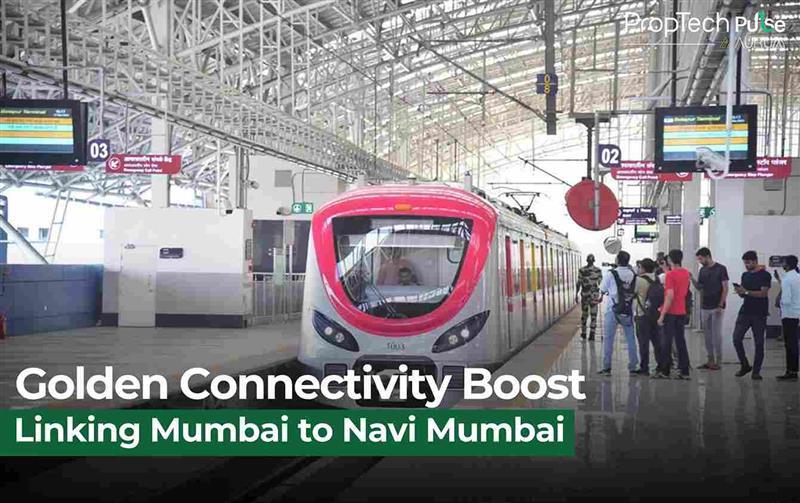
A Golden Thread Weaving Mumbai and Navi Mumbai Together
In the fast-paced tapestry of Mumbai’s urban landscape, infrastructure projects often mark the beginning of transformation. Among these, Mumbai Metro Line 8, fondly dubbed the Gold Line, is one such thread promising to weave together the city's bustling energy with the promise of future growth—especially for real estate.
Scheduled for completion by mid-2025, this metro corridor isn't just another transport line; it's the vital link that will connect two of the country's most crucial air travel hubs—Chhatrapati Shivaji Maharaj International Airport (CSMIA) in Santacruz and the upcoming Navi Mumbai International Airport (NMIA).
The Journey: Faster, Smarter, and Stronger
Covering a span of approximately 35 to 40 kilometers, the Gold Line stands out for its planned speed of 90 km/h, making it significantly faster than most existing metro services in the region. The project will feature eight strategically placed stations, and operate with a blend of elevated and underground routes, ensuring efficient transit while minimizing surface disruption.
Owned and managed by the Mumbai Metropolitan Region Development Authority (MMRDA), the line is built at an estimated investment of Rs 15,000 crore, with a projected daily ridership of 9 lakh commuters. These numbers, as reported by Magicbricks, reflect the enormous potential of the Gold Line to reshape urban mobility.
Unlocking Real Estate Potential Across Corridors
But beyond speed and connectivity, the real story lies in the real estate transformation it is set to catalyze.
Properties along the Gold Line corridor, both residential and commercial, are expected to see a marked surge in demand. Areas like Santacruz, Kurla, BKC Annex, and Panvel are likely to become hotspots for investment. With enhanced accessibility, buyers and renters alike will turn their attention to these newly connected zones.
As with any major transit development, property values are expected to appreciate, especially in zones that lie within close proximity to the metro stations. Developers are already eyeing these regions for launching new residential and mixed-use developments, riding on the back of improved commuting options.
A New Commercial Hub in the Making
The Gold Line doesn't just benefit home buyers. The commercial real estate sector stands to gain as well. With both airports acting as economic anchors, businesses—especially in aviation, logistics, hospitality, and IT services—will increasingly favor offices and facilities near the corridor.
This could result in a visible shift in land-use patterns, with older industrial or warehousing zones being redeveloped into plush office complexes and co-working hubs. Moreover, the infusion of commuters will further drive the development of retail outlets, cafes, and public spaces, echoing the transformation seen in areas like BKC and Andheri post metro integration.
Empowering Suburbs and Enhancing Livability
The real magic of Metro Line 8 lies in its ability to democratize opportunity. Areas that were once deemed remote—like parts of Navi Mumbai—will now be just a short ride away from the heart of Mumbai. With this, expect a boom in social infrastructure such as schools, healthcare centers, and recreation zones.
In short, the Gold Line isn't merely a metro line; it's a lifeline that will breathe new life into dormant real estate pockets and drive holistic urban development.
Conclusion: Gilded Tracks, Golden Opportunities
Mumbai Metro Line 8 promises not only to revolutionize the city’s airport connectivity but also to act as a catalyst for a real estate renaissance. With strategic station placements, rapid travel, and improved inter-airport logistics, the corridor is poised to unlock new chapters in Mumbai’s urban and economic growth.
For home buyers, investors, and businesses—the time to explore these golden opportunities is now.
Unlock the Latest in Real Estate
News, Infographics, Blogs & More! Delivered to your inbox.
“Data that drives action. Insight that inspires action. Technology that empowers action.“
“Data that drives action.
Insight that inspires action.
Technology that empowers action.“









